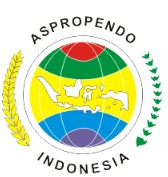Determinan Minat Mengunakan Aplikasi Akuntansi Mobile Pada Umkm Kota Palangka Raya Dalam Menghadapi Revolusi Industri 4.0
Sebuah Pendekatan Technology Acceptance Model
DOI:
https://doi.org/10.37304/ej.v5i1.12229Keywords:
Interest in using mobile accounting applications, technology acceptance model, perceivedeaseofuse, perceived usefulnessAbstract
This research adopts the Technology Acceptance Model to examine the factors that influence interest in using mobile accounting applications for financial recording. The purpose of this research is to examine the influence of perceived convenience and perceived usefulness on interest in using mobile accounting applications for financial recording. The sample in this research is UMKM in Palangka Raya. The data collection method is a survey using a questionnaire as a research instrument. The number of samples was 100. Data were analyzed using Structural Equation Modeling-Partial least squares (SEM-PLS) with the Warp PLS 8 program. The results of the study found that perceived ease of use and perceived usefulness had a positive effect on interest in using mobile accounting applications
Downloads
References
Astiyah, A., & Budiantara, M. (2023). Jurnal akuntansi dan keuangan (jak). Jurnal Akuntansi dan Keuangan, 28(1).
Davis, F. D. (1989). Perceived usefulness, perceived ease of use, and user acceptance of information technology. MIS Quarterly: Management Information Systems, 13(3), 319–339. Management Information Systems Research Center.
Elvira, J. G. (2018). Analisis Penerapan Aplikasi Akuntansi Berbasis Android Si Apik untuk Memenuhi Kebutuhan Sistem Informasi Akuntansi Pada Usaha Mikro Kecil Menengah (Studi Kasus di GR Souvenir Pundong, Bantul, Yogyakarta). Universitas Sanata Dharma.
Ghozali, I., & Latan, H. (2015). Partial Least Squares: Konsep, Teknik dan Aplikasi SmartPLS 3.0 untuk Penelitian Empiris (2nd ed.). Semarang: Badan Penerbit Universitas Diponegoro.
Harnida, M., Mardah, S., & Bulkia, S. (2018). Manfaat Penyusunan Laporan Keuangan Bagi Usaha Sasirangan Kampung Sasirangan Kelurahan Seberang Mesjid Kota Banjarmasin. Prosiding Hasil-Hasil Pengabdian kepada Masyarakat Tahun 2018, 27–31.
Julius, N., Makmum & Edi, S. Minat Penggunaan dan Kepercayaan Pada Aplikasi Pencatatan Keuangan Si Apik. Jurnal Abadi Masyarakat Multidisiplin. Vol2, no 1. Hal 27-32
Legris, P., Ingham, J., & Collerette, P. (2003). Why do people use information technology? A critical review of the technology acceptance model. Information and Management, 40(3), 191–204.
Mahendra, A. P., Benius, & Sabirin. (2022). Strategi Pengembangan Usaha Mikro Kecil Dan Menengah (UMKM) di Kota Palangka Raya Menghadapi Revolusi Industri 4.0. GROWTH, 8, 68–77.
Nurhaliza, S. (2022). Begini Pentingnya Peran UMKM dalam Perekonomian Indonesia! idxchannel.com. Retrieved May 15, 2022, from https://www.idxchannel.com/economics/begini-pentingnya-peran-umkm-dalam-perekonomian-indonesia
Ria, A. (2018). Analisis Penerapan Aplikasi Keuangan Berbasis Android pada Laporan Keuangan UMKM Mekarsari Depok. Sosio e-kons, 10(3), 207.
Rohmah, K. L., & Arisudhana, A. (2022). Pengaruh Karakteristik Kewirausahaan, Bantuan Pemerintah, Penggunaan Teknologi Dan Manajemen Krisis Terhadap Ketahanan Umkm Pada Masa Pandemi Covid-19 Di Kabupaten Sleman. Jurnal Riset …, 8(1). Retrieved August 1, 2023, from https://ejurnal.mercubuana-yogya.ac.id/index.php/akuntansi/article/view/2086
Saraswati, E. (2021). Peranan Sistem Informasi Akuntansi terhadap Perkembangan Usaha Mikro, Kecil, dan Menengah “Rumah Kreatif BUMN” Purbalingga. Empowerment : Jurnal Pengabdian Masyarakat, 4(01), 26–33.
Sinarwati, N. K., Sujana, E., Nyoman, D., & Herawati, T. (2019). Peran Sistem Informasi Akuntansi Berbasis Mobile Bagi Peningkatan Kinerja Umkm. KRISNA: Kumpulan Riset Akuntansi, 11(1), 26–32. Retrieved from https://ejournal.warmadewa.ac.id/index.php/krisna/article/view/1123
Sugiyono. (2016). Metode Penelitian Pendidikan : Pendekatan Kuantitatif, Kualitatif, dan R&D (23rd ed.). Bandung: Alfabeta.
Suryani, E., Almanika, S., & Septiawan, A. (2021). Persepsi Ukm Terhadap Aplikasi Akuntansi Berbasis Android Dengan Pendekatan Technology Acceptance Model Dan Theory of Planned Behavior. Jmm Unram - Master of Management Journal, 10(3), 199–214.
Syafitriyani. (2022). Makna Penerapan Pencatatan Akuntansi Pada Usaha Mikro Kecil Dan Menengah (Studi Pada Umkm Kerajinan Sangkar Burung Di Kelurahan Sumberejo, Mranggen, Demak). Universitas Semarang.
Venkatesh, V., & Davis, F. (2000). A Theoretical Extension of the Technology Acceptance Model: Four Longitudinal Field Studies. Management Science, 46, 186–204.
Wibowo, A., & Kurniawati, E. P. (2016). Pengaruh Penggunaan Informasi Akuntansi Terhadap Keberhasilan Usaha Kecil Menengah (Studi Pada Sentra Konveksi di Kecamatan Tingkir Kota Salatiga). Jurnal Ekonomi dan Bisnis, 18(2), 107. Fakultas Ekonomika dan Bisnis. Retrieved May 24, 2022, from https://ejournal.uksw.edu/jeb/article/view/269
Zahro, N. A., Indrianasari, N. T., & Yatminiwati, M. (2019). Analisis Penerapan Aplikasi Akuntansi Berbasis Android SI Apik Untuk Memenuhi Kebutuhan Sistem Informasi Akuntansi di Usaha Kecil (Studi Kasus pada Alfin Souvenir Lumajang). Progress Conference, 2(July 2019), 685–693. Retrieved from http://proceedings.stiewidyagamalumajang.ac.id/index.php/progress
Zulkifli, K. (2021). Makna Akuntansi Bagi Pelaku Usaha Mikro Kecil Menengah (Umkm). RISTANSI: Riset Akuntansi, 2(1), 1–11.









